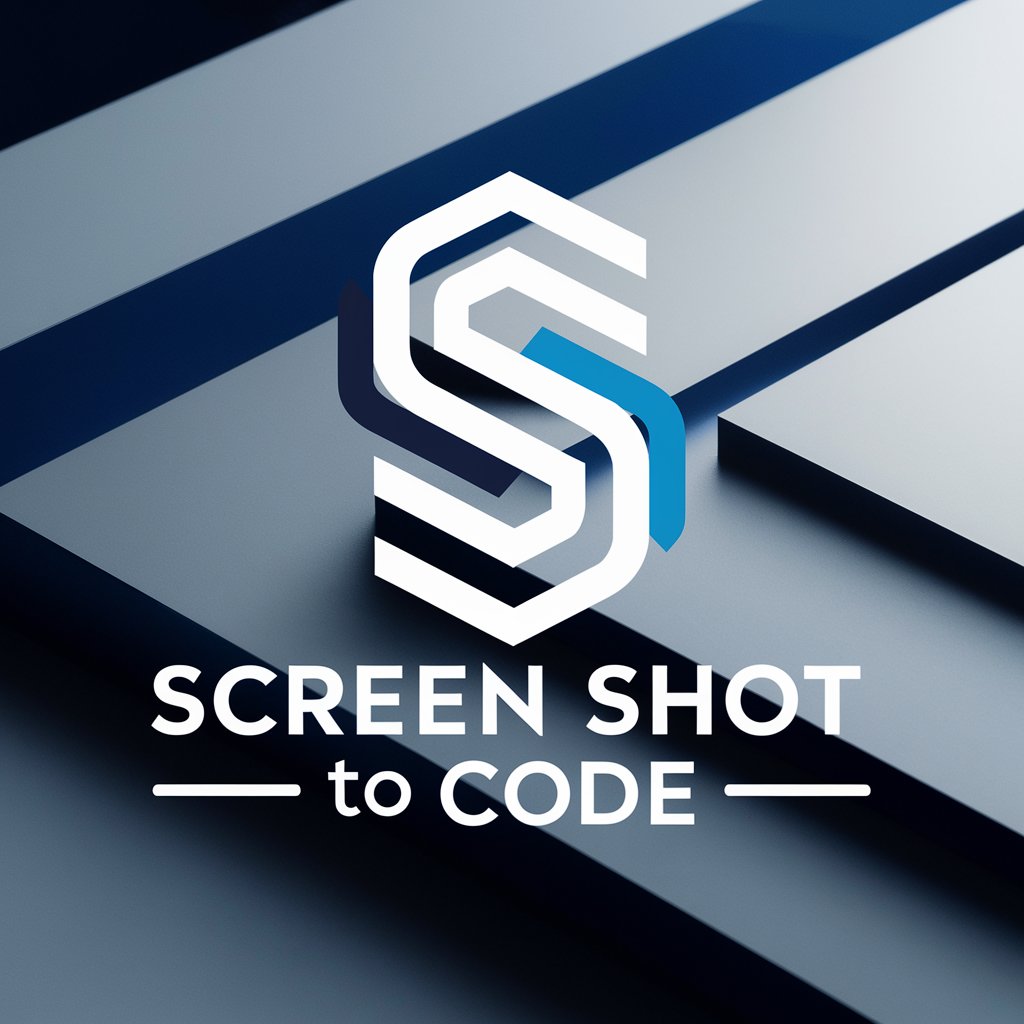3 GPTs for Design-to-Code Conversion Powered by AI for Free of 2025
AI GPTs for Design-to-Code Conversion are advanced tools that leverage the power of Generative Pre-trained Transformers to facilitate the translation of visual design elements into executable code. These tools are pivotal in bridging the gap between design and development, enabling a seamless transformation of graphical user interfaces into functional software components. By understanding the context and intricacies of design specifications, these AI-driven solutions offer tailored code generation, optimizing the workflow from design conceptualization to product deployment.
Top 3 GPTs for Design-to-Code Conversion are: Flutter GPT,Screen Shot to Code,CSS Genie
Principal Attributes of Design-to-Code AI Tools
These AI GPTs excel in their adaptability, transitioning smoothly from straightforward layout translations to intricate code generation for complex designs. Core features include intuitive language understanding, enabling precise interpretation of design elements; robust technical support for various coding languages and frameworks; advanced web search integration for resource optimization; dynamic image creation for prototyping; and sophisticated data analysis capabilities to refine user experience and functionality.
Who Benefits from Design-to-Code AI Solutions
AI GPTs for Design-to-Code Conversion are valuable assets for a diverse audience, including design novices seeking to bring their visions to life, developers aiming to streamline their workflow, and professionals in the field striving for efficiency and precision. These tools democratize code generation, offering intuitive interfaces for users with minimal coding background, while also providing extensive customization and integration options for seasoned programmers.
Try Our other AI GPTs tools for Free
Flutter Learning Aid
Revolutionize your Flutter learning journey with AI GPTs tools – your gateway to intuitive, adaptive, and comprehensive Flutter development resources.
Code Quality Assurance
Discover AI GPT tools for Code Quality Assurance, your AI-powered partner for enhancing code standards. Tailored for both beginners and experts, these tools ensure top-notch software development with cutting-edge AI technology.
UI Development Efficiency
Explore how AI GPTs revolutionize UI development, offering adaptable, intelligent tools that enhance efficiency and creativity for developers and designers alike.
Decision-Making Insight
Discover how AI GPTs revolutionize decision-making with tailored insights, adaptable features, and broad accessibility, catering to both technical and non-technical users.
Self-Reflection Tool
Explore the transformative power of AI GPTs for Self-Reflection - your digital companion for personal growth and mental well-being. Tailored insights, user-friendly, and adaptable to your self-improvement journey.
Future Path Exploration
Discover AI GPTs for Future Path Exploration – your key to unlocking advanced predictive analytics and strategic planning. Tailored for diverse users, these tools offer unparalleled insights into future scenarios.
Broadening Horizons with AI-Driven Code Generation
AI GPTs for Design-to-Code Conversion are not just tools; they represent a paradigm shift in how software is developed. They harmonize design and development, foster collaboration across disciplines, and open up new possibilities for innovation. With user-centric interfaces and the ability to integrate seamlessly into various industries, these AI solutions empower users to materialize ideas swiftly and efficiently, setting new standards for the digital product lifecycle.
Frequently Asked Questions
What exactly is Design-to-Code Conversion in AI GPTs?
Design-to-Code Conversion in AI GPTs refers to the process of transforming visual design components into functional code using AI-driven tools, enabling a seamless transition from design prototypes to ready-to-deploy software products.
Who can use these AI GPTs for Design-to-Code Conversion?
These tools are designed for a wide range of users, from individuals with limited coding knowledge who wish to bring design concepts to life, to professional developers and designers seeking to enhance productivity and accuracy in their workflows.
How do these tools handle different programming languages?
AI GPTs for Design-to-Code are equipped with advanced algorithms that support and understand various programming languages, offering versatile code generation capabilities tailored to specific project requirements and frameworks.
Can these tools integrate with existing design and development workflows?
Yes, these AI GPTs are designed with flexibility in mind, providing features and interfaces that can easily integrate with existing design and development ecosystems, thereby enhancing and streamlining the workflow.
Are there customization options for experienced developers?
Absolutely, these tools offer extensive customization capabilities, allowing experienced developers to fine-tune code generation, integrate with existing codebases, and adapt the tools to fit sophisticated project needs.
How do these AI tools ensure the accuracy of the generated code?
AI GPTs for Design-to-Code employ sophisticated machine learning models and rigorous validation processes to ensure that the generated code is not only syntactically correct but also semantically aligned with the design intent and functional requirements.
What kind of technical support is available for these tools?
These tools typically come with comprehensive technical support, including documentation, user communities, and dedicated support teams, to assist users in resolving any issues and optimizing their use of the tools.
Can non-technical users understand and operate these AI GPTs effectively?
Yes, one of the key strengths of these tools is their user-friendly interface and intuitive design, making them accessible and easy to use even for individuals with minimal or no technical background.


